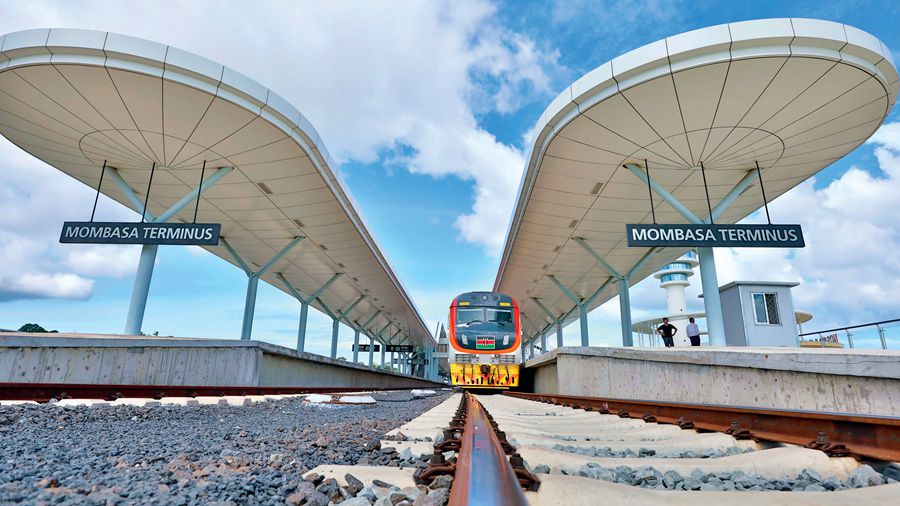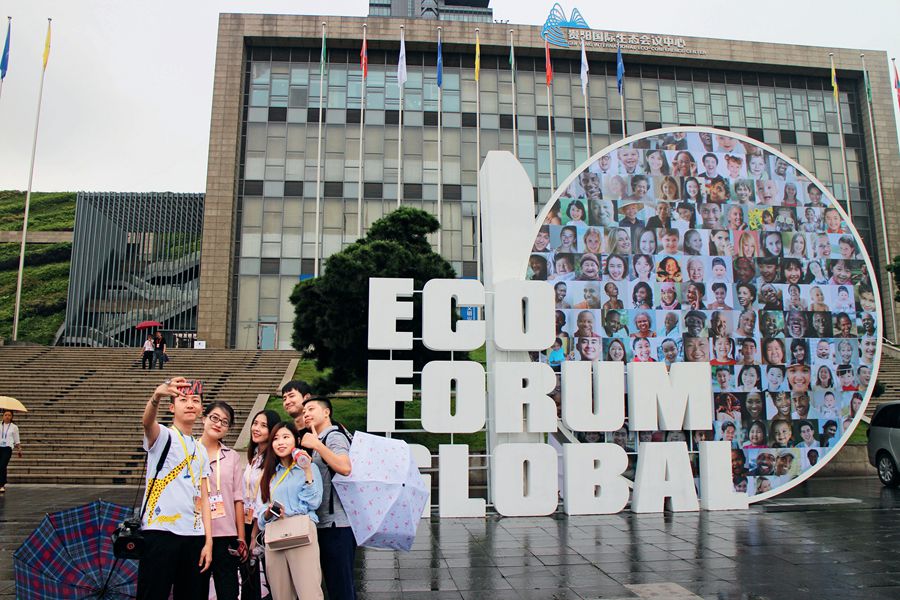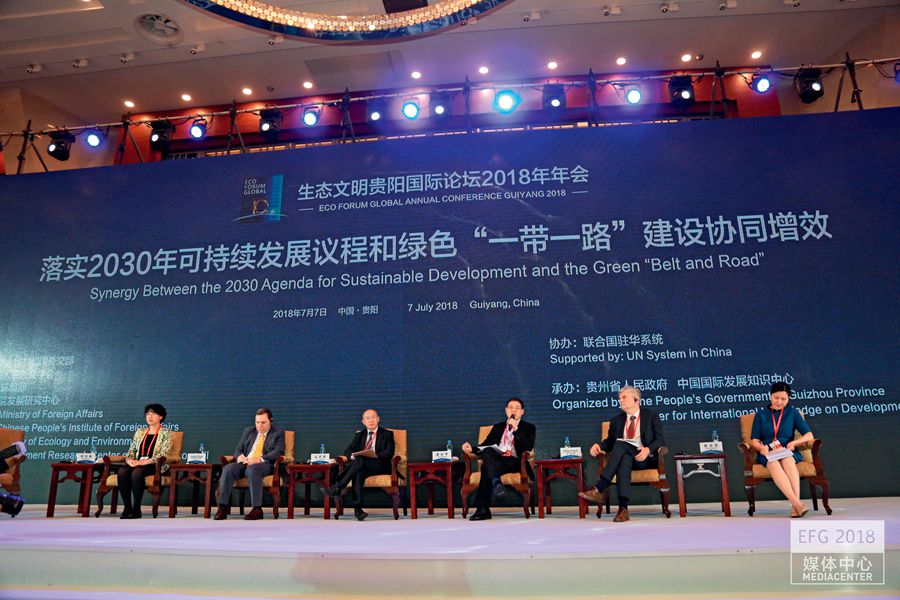AS people become more consciously aware of the world around them, environmental protection is high up on the list of priorities from both public and private sectors across the globe. In the process, the contradiction between development and environmental protection is always a subject of much heated debate. Being acutely aware of this, China highlights the concept of ecological progress in the Belt and Road Initiative, promoting green development and strengthening ecological conservation.
Engine for Sustainable Development
China has always attached much importance to environmental issues, and environmental protection was set as a basic state policy at the 1983 National Working Conference on Environmental Protection. Entering the 21st century, supporting measures, laws, regulations, publicity, and education on environmental issues has been gradually improved. Ecological progress, being an effort to achieve sustainable development in the light of natural conditions, was given the status of a political program and national strategy at the 18th National Congress of the Communist Party of China (CPC) in 2012.

A train arrives at Mombasa Station, terminus of the Mombasa-Nairobi Railway, a China-funded project, in Kenya.
When the Chinese government first put forward the Belt and Road Initiative in the second half of 2013, environmental protection was naturally included in the strategic plan. Since then, Chinese President Xi Jinping has called for joint construction of the green Belt and Road several times. At the Belt and Road Forum for International Cooperation in May 2017, President Xi made clear that China should carry out the new concept of green development, advocate a green, low-carbon, circular, and sustainable mode of production and way of life, strengthen cooperation in ecological conservation, promote ecological progress, and work together with other countries to achieve the 2030 Agenda for Sustainable Development. The Agenda was signed by 193 UN member countries at the United Nations Sustainable Development Summit in 2015, aimed at achieving 17 sustainable development goals in the fields of economy, society, resources, and environment by the end of 2030.
Nicholas Rosellini, UN resident coordinator in China, said at a meeting earlier this year that the Belt and Road Initiative and the 2030 Agenda for Sustainable Development share the same vision and basic principle, and that the initiative will contribute to accelerating the agenda. In his view, the integration of the concept of green development into the construction of the Belt and Road will ensure sustainable development of the project in terms of both economy and environment, which provides a new driving force for the implementation of the 2030 Agenda for Sustainable Development.
So far, 15 UN agencies have signed agreements related to the Belt and Road Initiative with relevant Chinese agencies. These agreements are aimed at creating a synergy between the 2030 Agenda for Sustainable Development and the Belt and Road Initiative.
Green Infrastructure
Inter-connectivity of infrastructure is a key point of the Belt and Road Initiative as well as a priority area in the construction of the green Belt and Road. Since the Initiative was first proposed, China has enhanced cooperation with countries and regions along the Belt and Road in the field of infrastructure, including highways, railways, and aviation, shipping, energy, and information facilities.

Attendees pose for a selfie in front of the logo of the Eco Forum Global.
However, the construction of infrastructure consumes a large amount of resources, including steel, cement, stone, and wood. It will decide the energy consumption, resource utilization, and waste discharge of the countries along the Belt and Road in the next few decades. The carbon emissions of countries along the Belt and Road make up over 60 percent of the global total, with per capita emissions of 6.1 tons, well above the world average of 4.5 tons. Therefore, construction of green infrastructure is an inevitable choice.
In March 2015, Vision and Actions on Jointly Building Silk Road Economic Belt and 21st-Century Maritime Silk Road was issued by China’s National Development and Reform Commission, Ministry of Foreign Affairs, and the Ministry of Commerce. It clearly stated that we should strengthen green low-carbon construction and operational management of the infrastructure and take into full consideration the impact of global climate change.
Chinese enterprises keep improving the low-carbon construction of infrastructure for the Belt and Road Initiative. Take the Mombasa-Nairobi Railway in Kenya as an example. Since railway transport can contribute to less highway transport, the Mombasa-Nairobi Railway has helped reduce the emissions of carbon-dioxide by 40 percent and lowered the environmental risk of road transport. It is now regarded as “the Path of Friendship” as well as “the Path of Ecological Conservation” between China and Africa in the new era.
However, a huge financing gap exists in the construction of green infrastructure. The World Bank estimates that an annual extra investment of US $80 billion is needed to achieve the goal of low-carbon energy transformation by 2030. “The Belt and Road Initiative can help countries along the Belt and Road take advantage of new financial institutions such as Asian Infrastructure Investment Bank, attracting investment to the construction of infrastructure of low or even zero carbon emission,” said Taraq Emtairah, director of the energy division of the United Nations Industrial Development Organization, at the Eco Forum Global 2018 Conference in Guiyang in August.
And according to Dr. Zhou Guomei, deputy director of China-ASEAN Environmental Cooperation Center, “By building mechanisms for green technology and green innovation, we can introduce low-carbon and environmentally friendly technologies and promote low-carbon transformation in the construction of green infrastructure.”
Communication in Environmental Protection
Since enterprises are the main force in building the green Belt and Road, the Chinese government has taken a range of measures to help Chinese companies learn about environmental laws and regulations in other countries and be socially responsible to prevent environmental risks.

A sub-forum is held titled “Synergy Between the 2030 Agenda for Sustainable Development and the Green ‘Belt and Road’ ” at the Eco Forum Global Annual Conference Guiyang 2018.
At the Belt and Road Forum for International Cooperation (BRF) held in May 2017, President Xi proposed to set up a big data service platform on ecological and environmental protection and an international coalition for green development along the Belt and Road. Aimed at collecting and collating ecological conditions, policies, laws and regulations, standards and technologies of environmental protection, and development of green industries of countries along the Belt and Road, this platform will provide fundamental information on environmental protection and support for overseas investment and operations of enterprises.
The international coalition for green development on the Belt and Road, jointly initiated by China’s Ministry of Ecology and Environment and United Nations Environment Programme, is dedicated to integrating the strength of national governments, international organizations, enterprises, think tanks and non-governmental organizations along the Belt and Road to jointly promote green sustainable development.
China has released the Guidance on Promoting Green Belt and Road and The Belt and Road Ecological and Environmental Cooperation Plan. “The Guidance specifies the general course and requirements for the green development of the Belt and Road, and the Plan gives more details on the targets, projects and missions. They further boost the making of environmental protection laws, policies, technological standards, and communication and cooperation between relevant businesses,” said Huang Runqiu, vice minister of ecology and environment.
Relying on existing bilateral and multilateral cooperation mechanisms, the Chinese government has hosted a series of dialogue and exchange events themed on the green Belt and Road to share the philosophy and practice of ecological progress and green development, such as the Eco Forum Global Annual Conference in Guiyang, capital of southwest China’s Guizhou Province, Ecological and Environmental Protection Cooperation Sub-Forum of the 2015 Euro-Asia Economic Forum in Xi’an, capital of Shaanxi Province, and China-Arab States Forum on Environmental Protection Cooperation in Yinchuan, Ningxia Hui Autonomous Region.
Nicholas Rosellini proposed that Chinese enterprises making investments abroad should not only operate in accordance with local environmental protection requirements, but also introduce higher standards for environmental protection into the host country, and provide training for local employees and enterprises. In fact, China has provided training in environmental governance to nearly 1,000 people in developing countries along the Belt and Road under the Green Silk Road Envoys Program.


